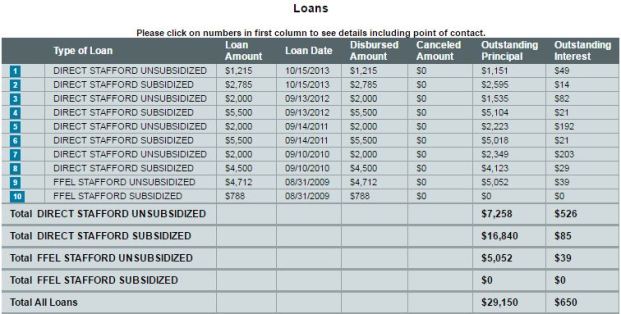All information on repayment plans is from this article by David Evans, Ph. D.
Additional info added by Casey Doten, Purdue Financial Aid Administrator
Most student loans begin repayment six months after the student leaves school. With November coming up quickly, now is the perfect time to review your repayment options and set up your payment plan before the first payment comes due!
There are two main types of repayment plans you can choose from: traditional and income-driven. For borrowers that will qualify for Public Service Loan Forgiveness (PSLF), income-driven plans may be the better option. Income-driven plans will require an annual verification of income. This fact sheet describes each of the repayment plans as well as pros and cons of each. For more information about each of the repayment plans visit the Federal Student Aid website.
Traditional Plans
Standard Repayment Plan
The Standard Repayment plan consist of equal monthly payments over a 10-year period of time. This repayment plan is good for those who can handle making their monthly payments and make enough money to afford them. This payment plan is best for those who have minimal other debts and start working right out of school.
The Pros: You’ll pay off your loan faster compared to other plans, and pay less interest as a result.
The Cons: Your monthly payments will be higher than those made through other plans.
Graduated Repayment Plan
The Graduated and Extended Repayment plans could be an option for you if your income is low when you graduate but will increase quickly. Under a graduated plan, payments start out low and increase during the repayment period, usually every two years. This is a good plan if you can’t afford your current payments but know you will make more money in the years to come.
The Pros: Your loan is still paid off within 10 years.
The Cons: You’ll pay more interest over the lifetime of your loan compared to the Standard Plan.
Extended Repayment Plan
An Extended Repayment Plan is an option if your loan amount is more than $30,000 and you want to stretch your repayment to 25 years.
The Pros: Smaller monthly payments (since they’re spread out over as many as 25 years) and more time to pay off your loan.
The Cons: You’ll be saddled with payments for a longer period of time as well as pay more interest.
Income-Driven Plans
If you qualify for an Income-Driven plan, these are often the most attractive options if you’re willing to recertify your payment each year (it’s not very difficult). However, some of these are contingent on when you took out loans! If you’re interested in student loan forgiveness*, you’ll need to be enrolled in any one of these plans.
Income Based Repayment Plan
If you’re not making enough money to cover all of your monthly expenses the Income Based Repayment (IBR) Plan would be a good option. There are two separate calculations for IBR which are dependent upon when you took out your student loans.
The Pros: The IBR plan takes into account your annual income as well as your family size. Your payment will be 10% of your discretionary income** if you were a new borrower on or after July 1, 2014. Otherwise it will be 15%. Any outstanding balance on your loan will be forgiven after 20 (for undergraduate loans) or 25 (for graduate loans) years.
The Cons: You will have to pay income taxes on any forgiven debt unless you qualify for PSLF (this is true for all loan forgiveness).
Income Contingent Repayment Plan
If you have a federal Direct Loan (other than a PLUS loan), you could opt for the Income Contingent Repayment (ICR) Plan. Your payments could be as low $5 or even $0.
The Pros: Your monthly payment will be the lesser of 20% of your discretionary income or on a repayment plan with a fixed payment over 12 years. You can have your remaining loan balance forgiven after 25 years of regular payments.
The Cons: You’ll pay more over the lifetime of your loan than you would with a 10-year plan, your payment could be lower than the monthly accrued interest and your loan principal will grow. You will have to pay income taxes on any forgiven debt unless you qualify for PSLF.
Income Sensitive Repayment (ISR) Plan
The Income Sensitive Repayment (ISR) Plan is only available for those with Federal Family Education Loan (FFEL) Program. Payments are based on your annual income, family size, and total loan amount. You would pay the loan off in fifteen years.
The Pros: Each lender has their own calculation, but generally it is between 4% and 25% of your monthly gross income, although your payment must be greater than or equal to the interest that accrues.
The Cons: It’s only available for up to five years. After that time, you must switch to another repayment plan. You must reapply annually, and there’s no guarantee that you’ll have continued enrollment in the plan.
Pay as You Earn Repayment Plan
The Pay as You Earn Repayment (PAYE) Plan is another option for those not able to afford their current monthly payments.
The Pros: The PAYE plan takes into account your annual income as well as your family size. Your payment will be 10% of your discretionary income. Any outstanding balance on your loan will be forgiven after 20 years.
The Cons: PAYE is only eligible to those who were new borrowers on or after October 1, 2007 and must have received a disbursement of a Direct Loan on or after October 1, 2011. You will have to pay income taxes on any forgiven debt unless you qualify for PSLF.
Revised Pay as You Earn Repayment Plan
The Revised Pay as You Earn Repayment (REPAYE) Plan is very similar to PAYE. This plan was created to allow more borrowers the opportunity to have their payments lowered to 10% of discretionary income.
The Pros: Not dependent upon when you took out your student loan, the payment will be 10% of your discretionary income. Any outstanding balance on your loan will be forgiven after 20 (for undergraduate loans) or 25 (for graduate loans) years.
The Cons: If you are married, your spouse’s income will be considered whether taxes are filed jointly or separately. You will have to pay income taxes on any forgiven debt unless you qualify for PSLF.
Summary
Federal student loans offer various ways for repayment. If you are in a situation (like so many others who have taken out student loans) that is not ideal for standard repayment of your loan, consider these options. There is a lot to consider when you are trying to decide which repayment plan to choose. Using the Federal Student Loan Repayment Estimator can help you make your decision by showing you what your payments would be under each of the plans described above.
*A note about loan forgiveness: There are two different kinds of loan forgiveness, Public Service Loan Forgiveness (PSLF) and loan forgiveness from your income-driven repayment plan ending. While both plans require you to be enrolled in an income-driven plan to reap the benefits there are some key differences:
-PSLF requires being employed at a qualifying employer in public service (non-profits, government, etc.) for 10 years/ 120 qualifying payments before forgiveness takes place. Standard forgiveness is after 20 or 25 years depending on your repayment plan.
-Any loan amounts forgiven under PSLF are tax-free, but not under standard forgiveness! So if you still have a balance on your loans after 20 (or 25) years, you will owe taxes on it as if it is income. While it’s still better than paying the amount back, it’s important to know it will have ramifications.
**Discretionary income = Your income – 150% of the poverty level in your state for your family size
Tags: income based repayment, loan repayment, Student Loans








